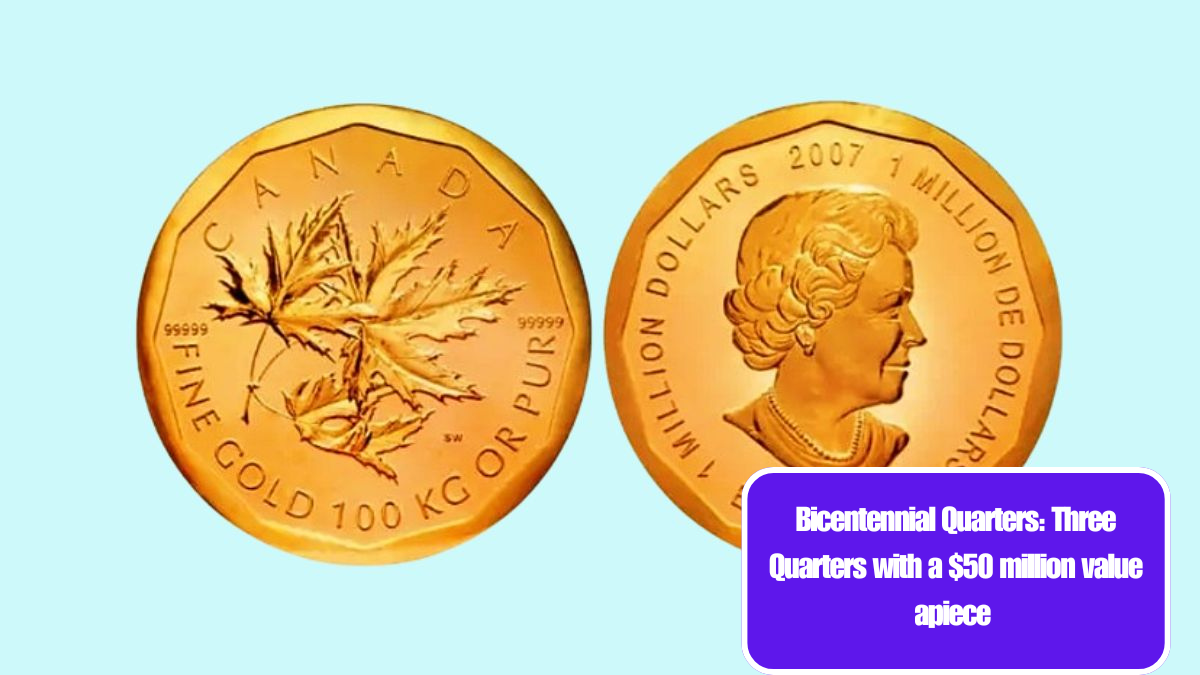The United States Bicentennial in 1976 was a monumental celebration, and among its many commemorative efforts, the release of the Bicentennial Quarter stands out. Minted to honor the 200th anniversary of the Declaration of Independence, these quarters feature a unique design that has captured the attention of collectors and investors alike. Surprisingly, three specific Bicentennial Quarters have gained notoriety for their staggering valuations, each estimated to be worth $50 million.
The Bicentennial Quarter: A Brief Overview
The Bicentennial Quarter, officially known as the 1976 quarter, showcases a design that includes the famous Dr. William D. H. Rinehart’s rendition of the Continental Congress meeting in Philadelphia. Instead of the traditional eagle, the reverse side features a depiction of the Liberty Bell. This change was part of a broader effort to celebrate American history during the bicentennial year.
Three main varieties of these quarters were minted: those produced at the Philadelphia Mint (no mint mark), the Denver Mint (D), and the San Francisco Mint (S), which were made for collectors and feature a proof finish. While most Bicentennial Quarters are worth face value or slightly more, specific rare examples have captured the interest of numismatists and treasure hunters alike.
The $50 Million Quarters
The allure of the Bicentennial Quarter extends beyond its historical significance; it’s the rare misprints and unique characteristics that can elevate a coin’s value to astronomical heights. Here are the three quarters that have been rumored to hold a staggering worth of $50 million each:
1. The 1976 Quarter with Double Die Obverse
This rare coin features a distinct double image on the obverse, which is a result of a minting error that occurred when the die was improperly aligned. Collectors highly prize this coin due to its unique visual effect. The rarity of the double die error, combined with its historical significance, makes this quarter incredibly sought after.
2. The 1976-S Proof Quarter with Missing Mint Mark
Another extraordinary find is the 1976-S proof quarter that lacks the “S” mint mark. Typically, quarters minted at the San Francisco Mint are marked to indicate their origin, but a small number were accidentally released without this mark. This error makes the coin exceptionally rare and desirable, leading to its sky-high valuation.
3. The 1976-D Quarter with Struck Through Error
The 1976-D quarter with a “struck through” error is also of significant interest to collectors. This coin has an anomaly where debris was struck into the coin during minting, creating a unique imperfection. Coins with such errors can command exorbitant prices, and this particular example is no exception.
Why the Hype?
The immense value of these quarters can be attributed to several factors:
- Rarity: Each of these coins is exceedingly rare, with only a handful known to exist.
- Historical Significance: They represent a pivotal moment in American history, making them not just currency but also cultural artifacts.
- Collector Demand: The numismatic community has a keen interest in error coins, driving prices up due to demand.
While the idea of owning a $50 million Bicentennial Quarter may sound like a fantasy, it underscores the fascinating world of coin collecting and the unexpected treasures that can emerge from seemingly ordinary currency. If you happen to come across a 1976 quarter, it may be worth a closer look—you never know what hidden value it may hold!
